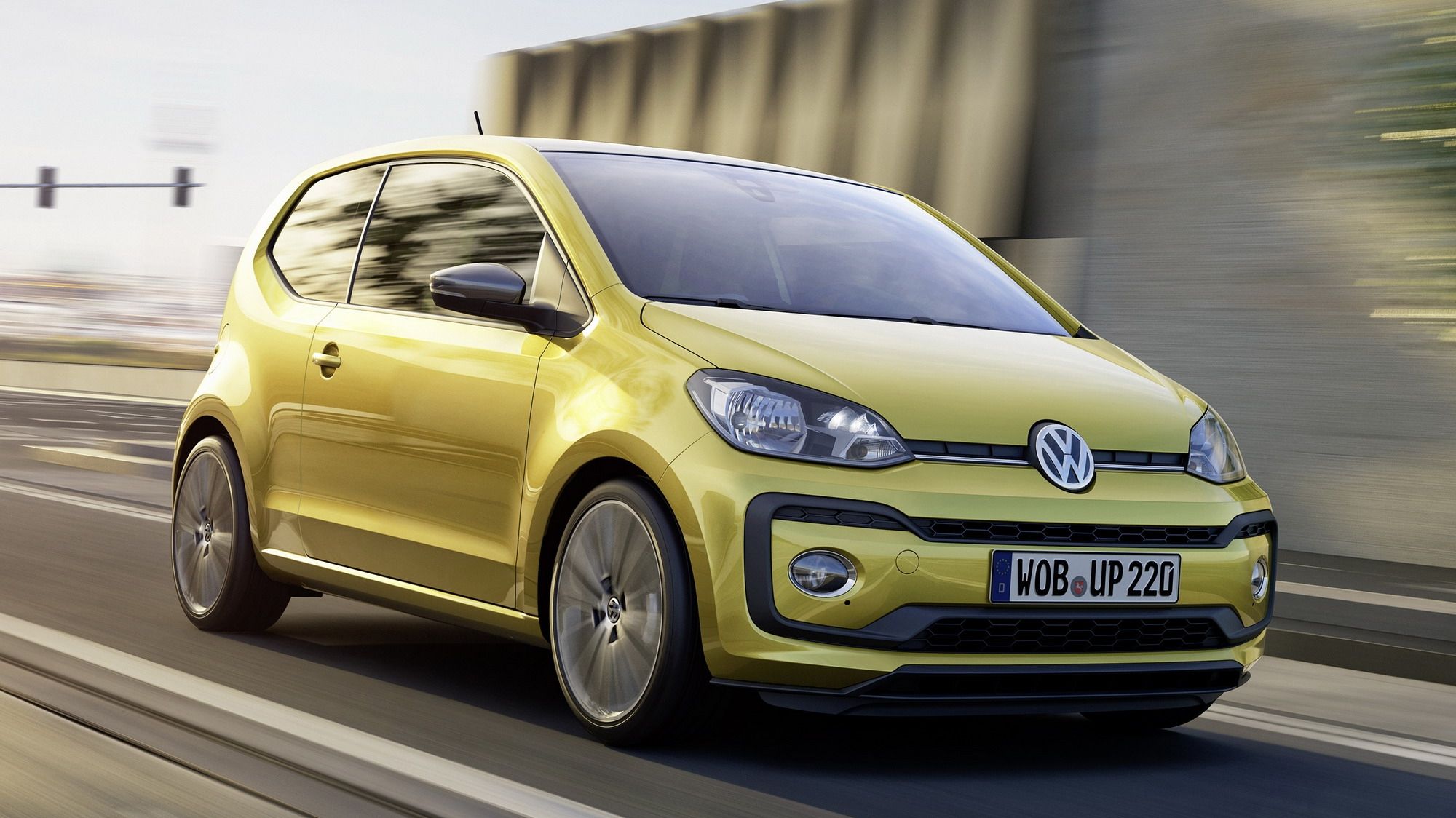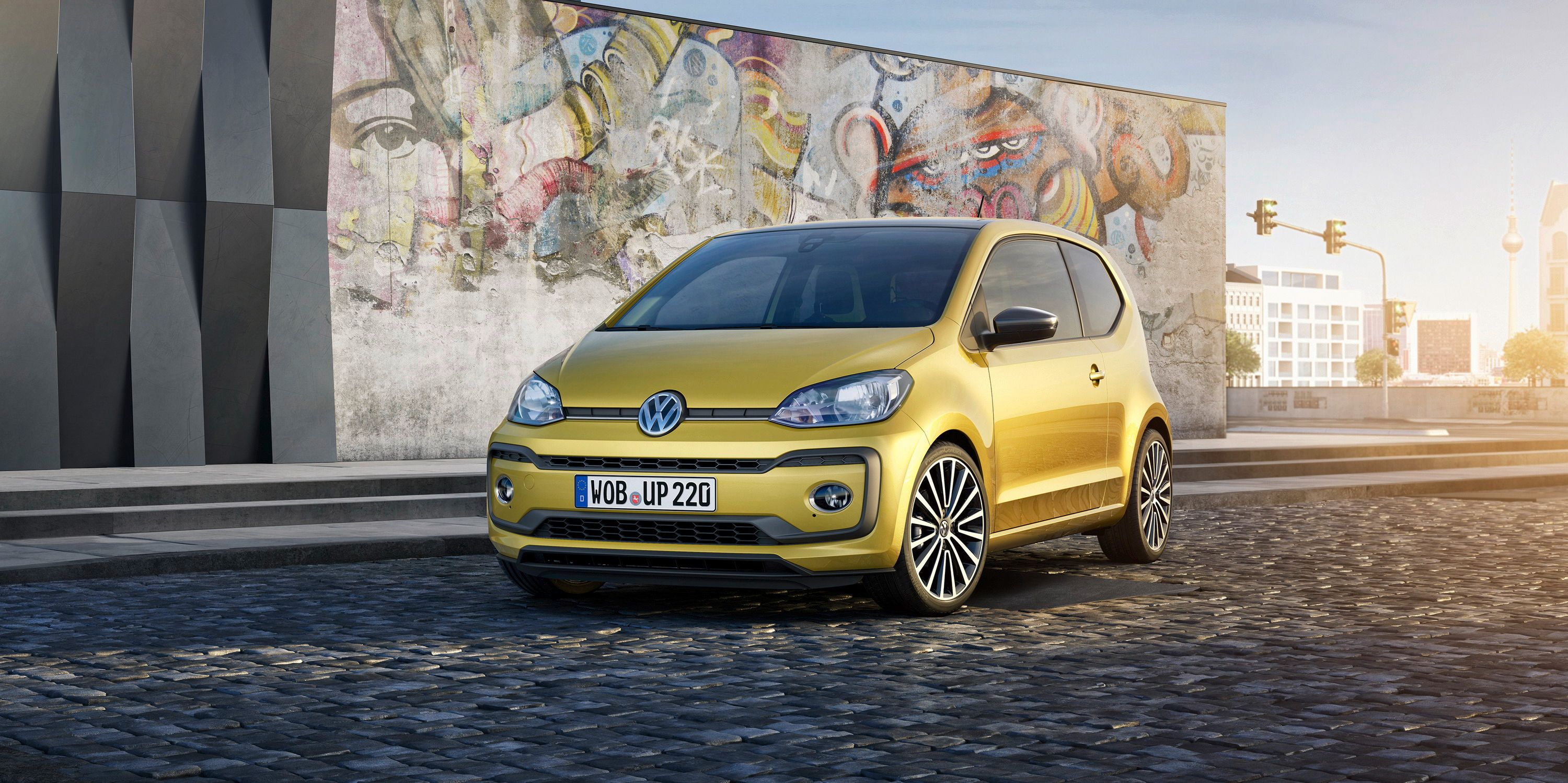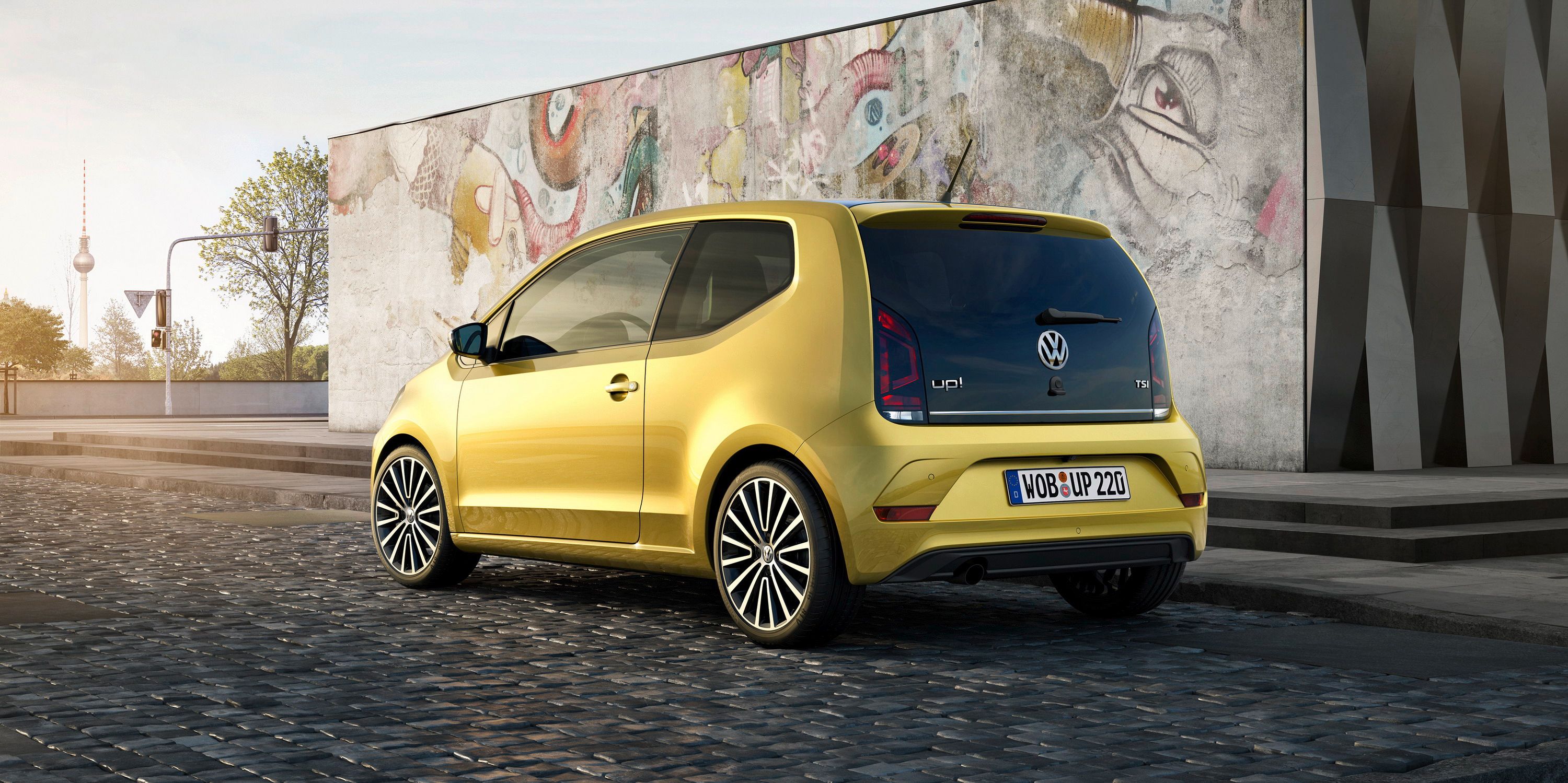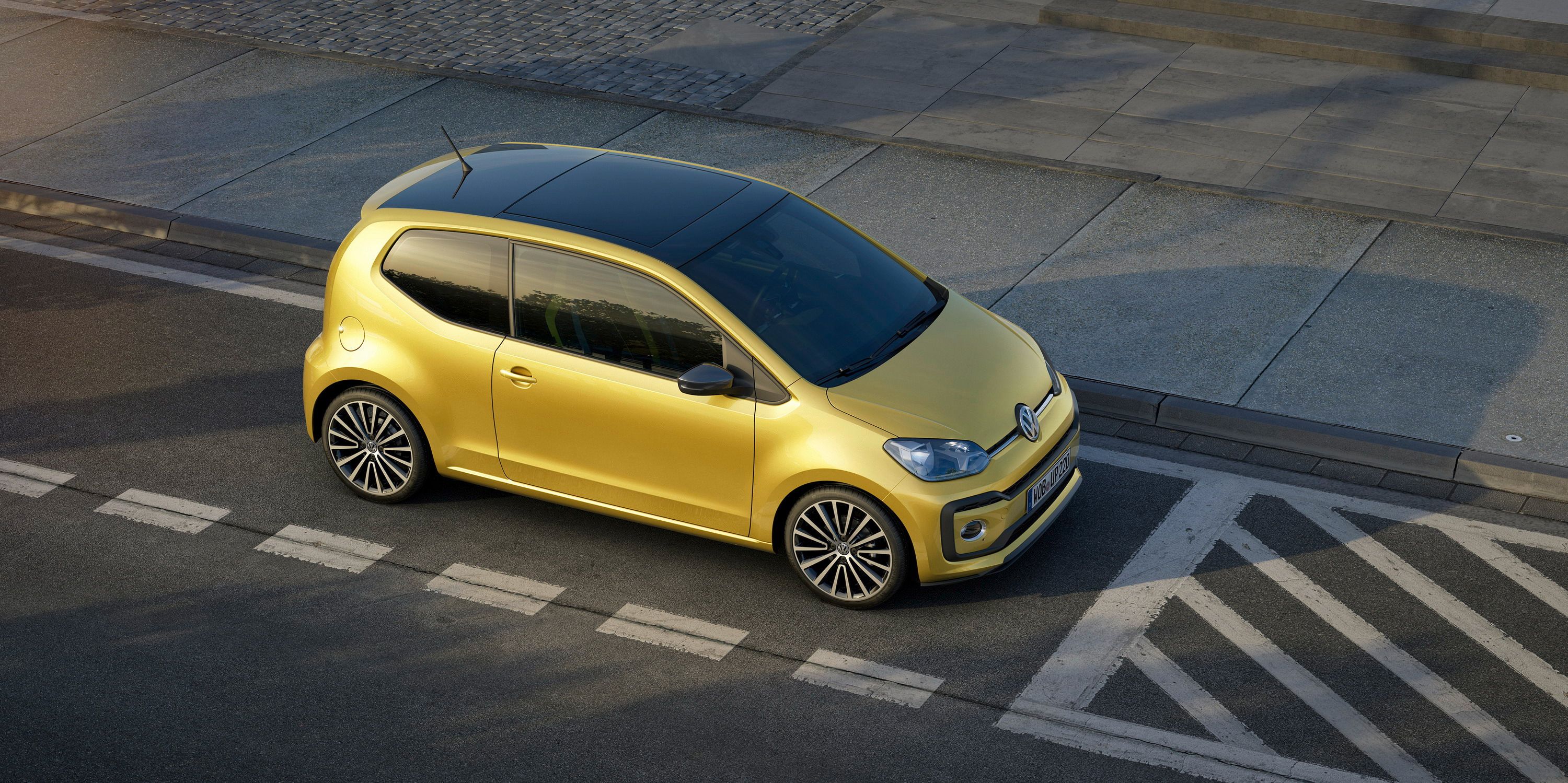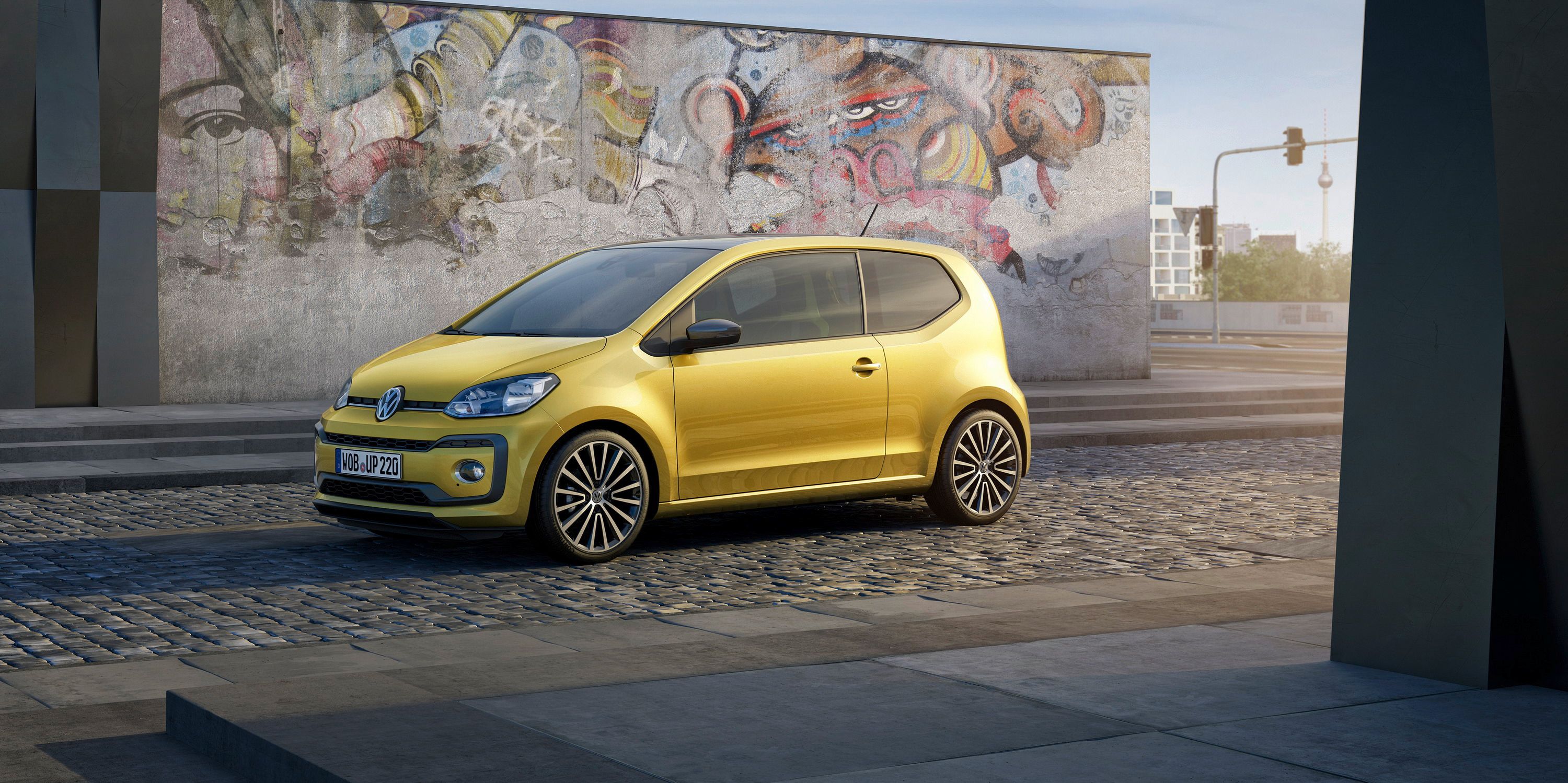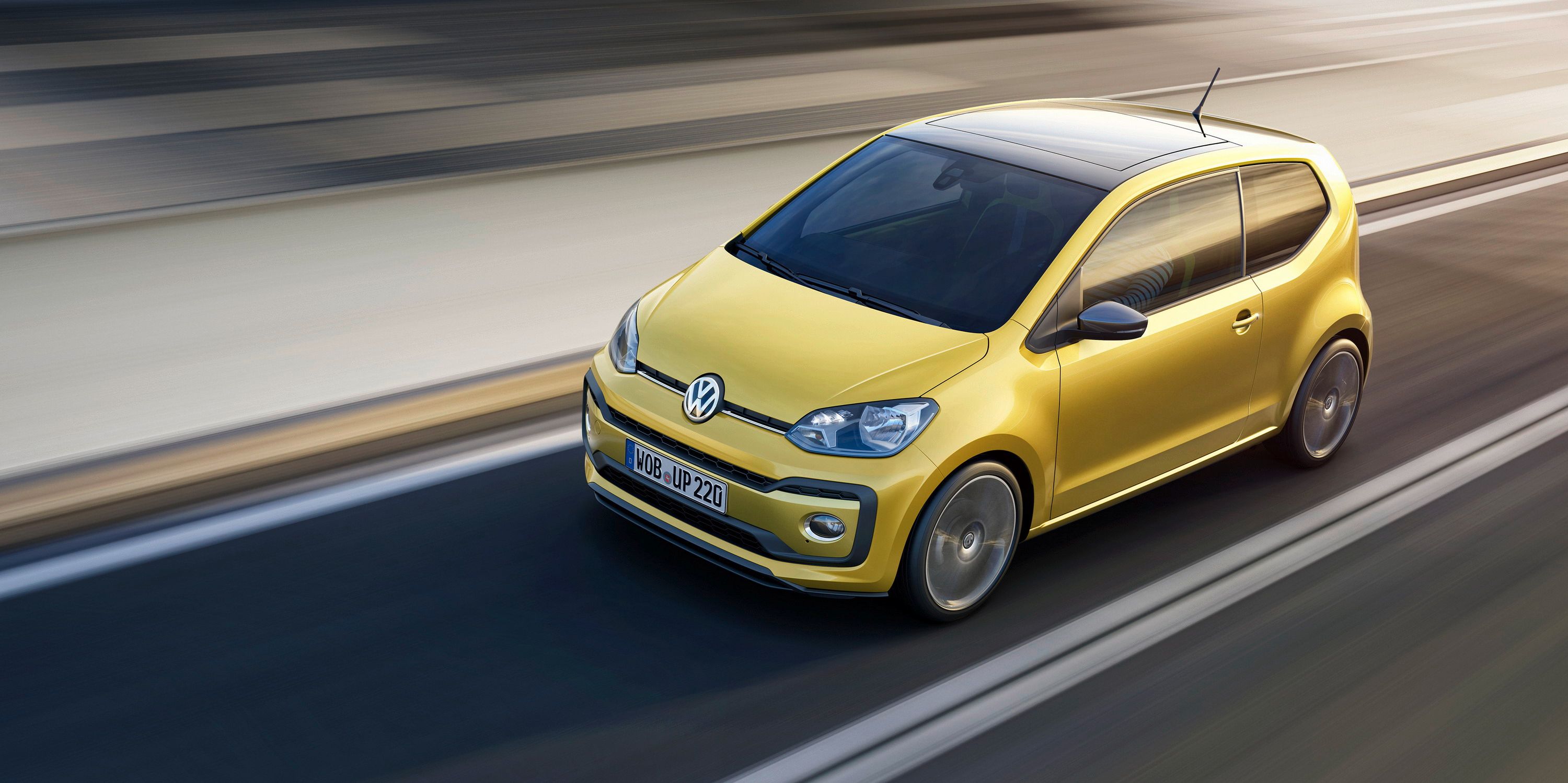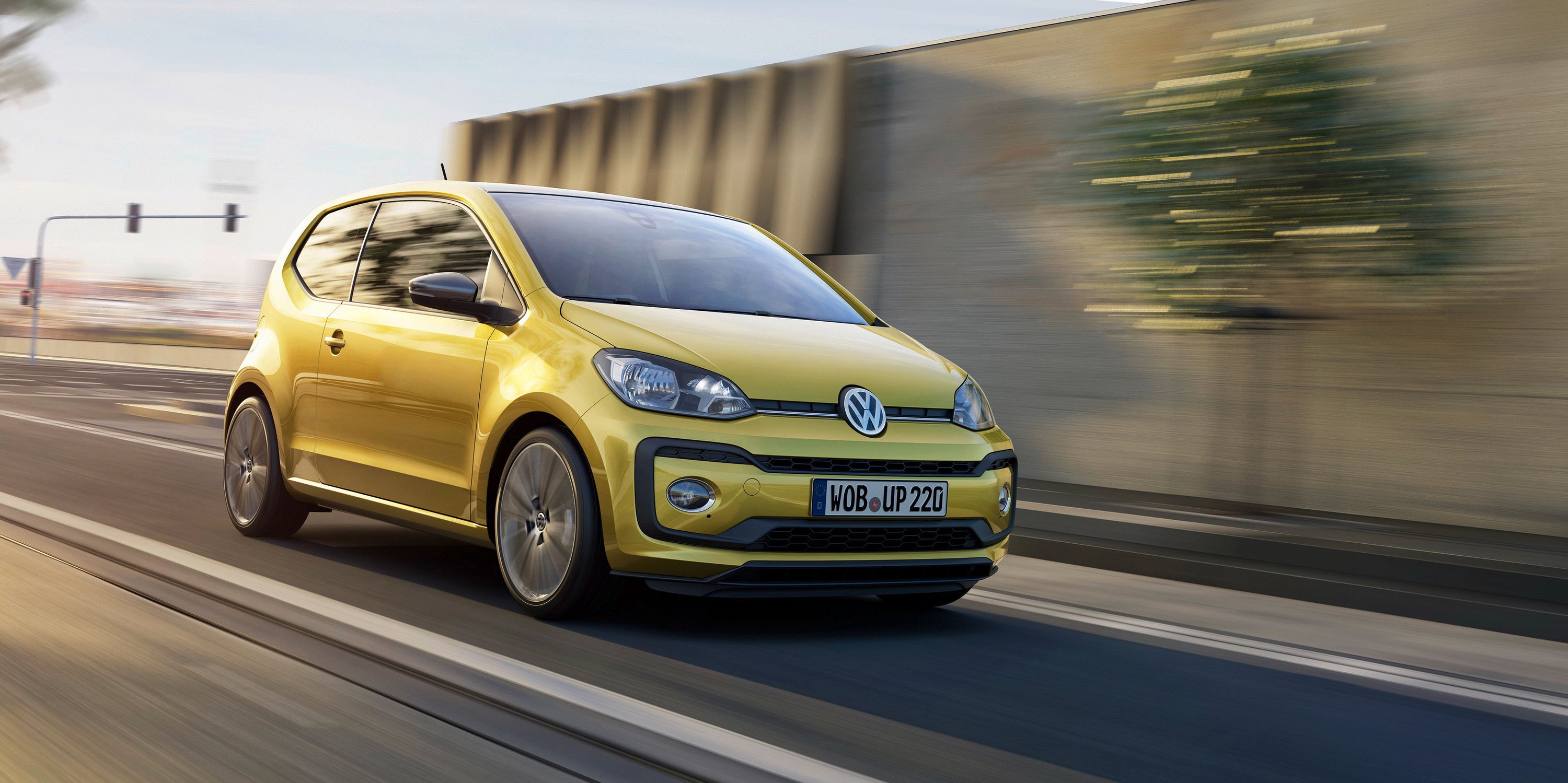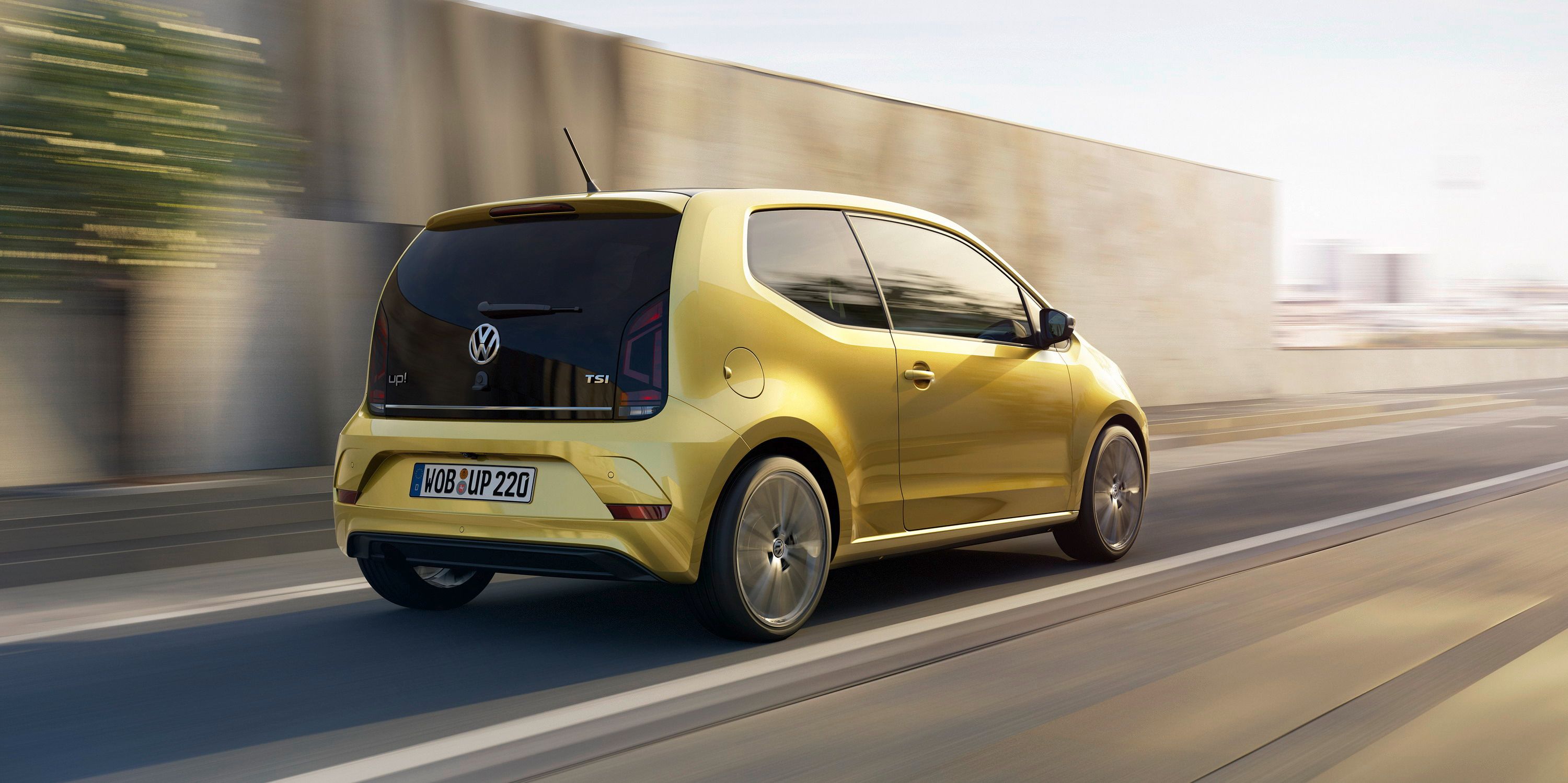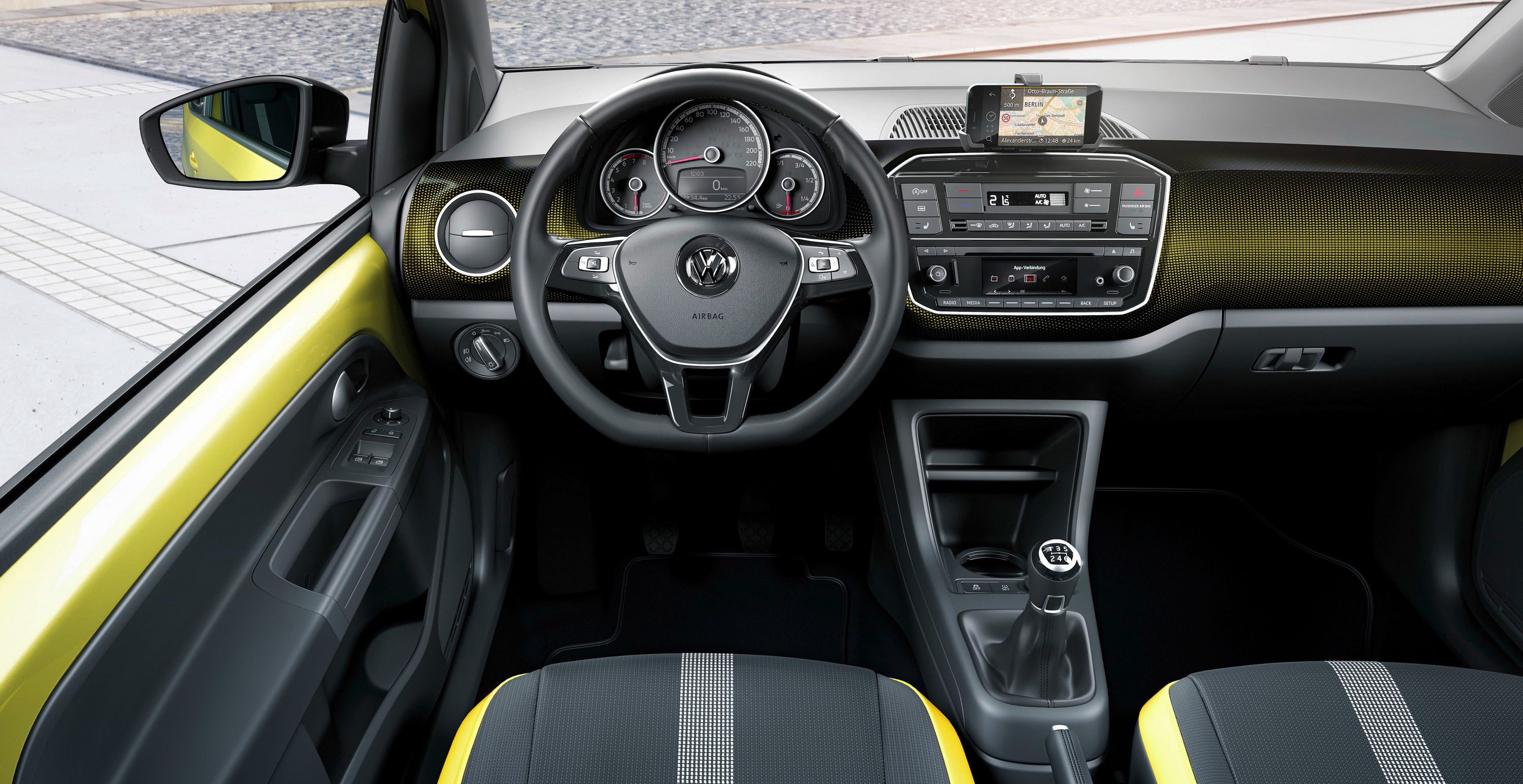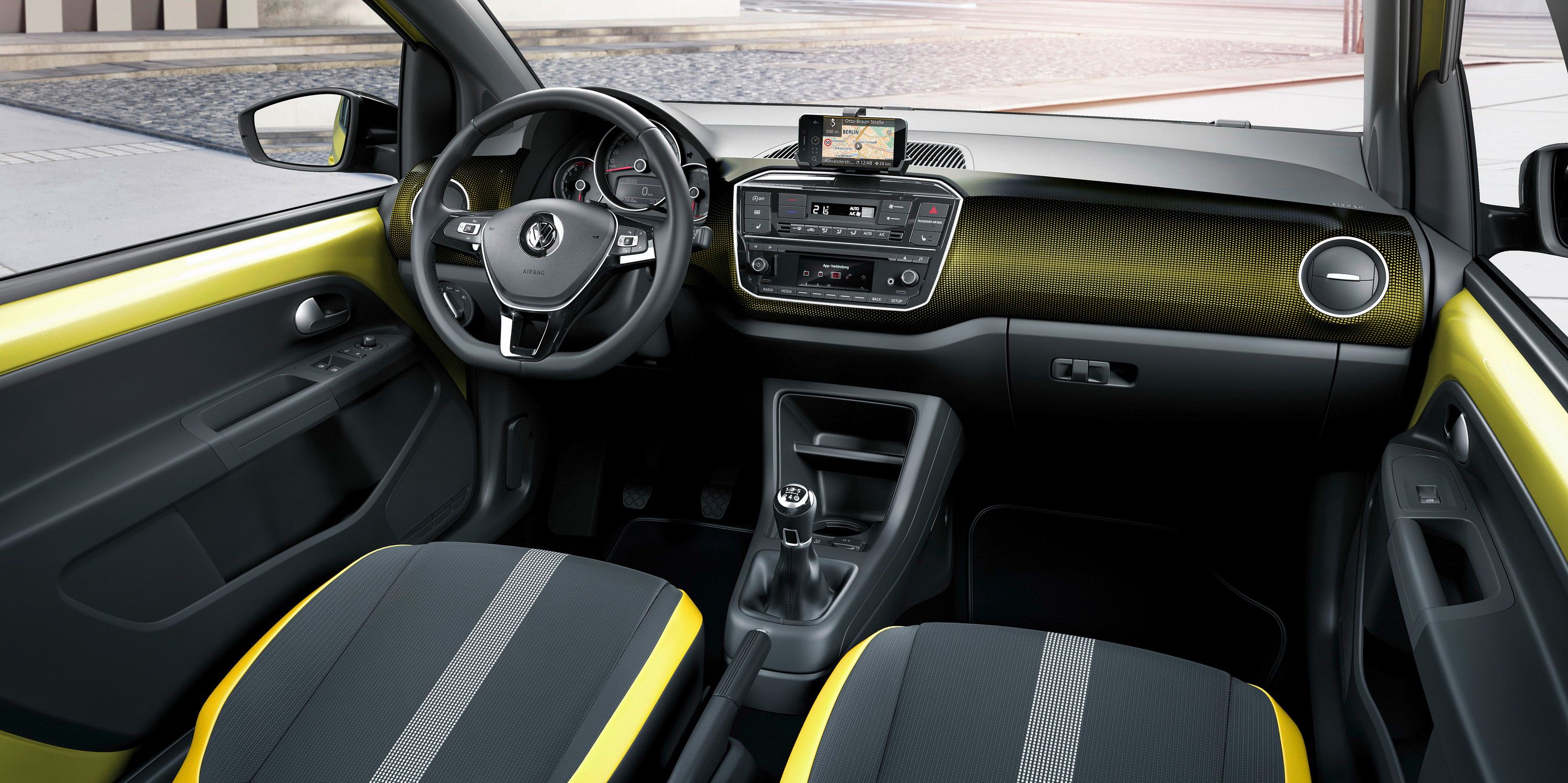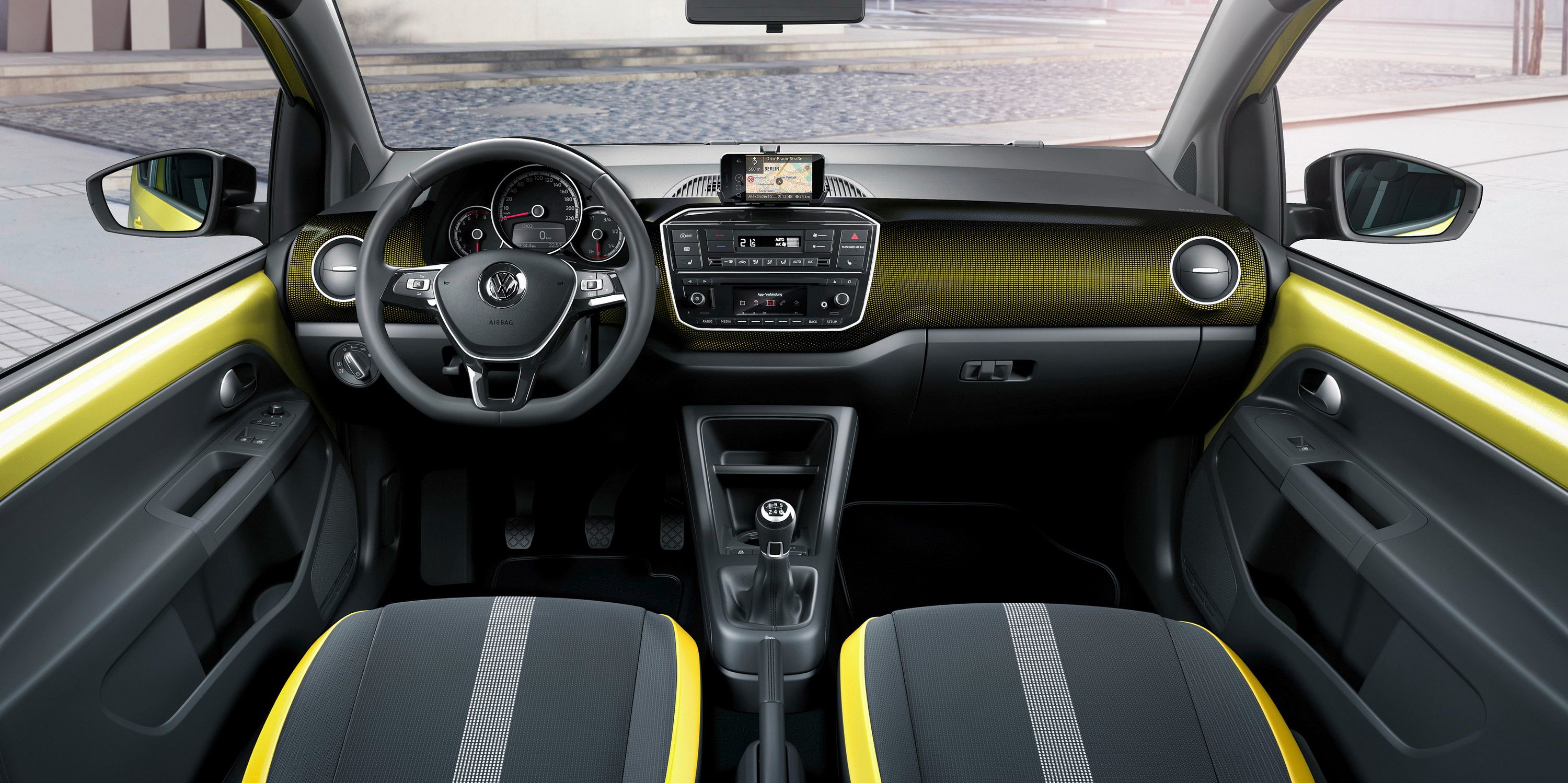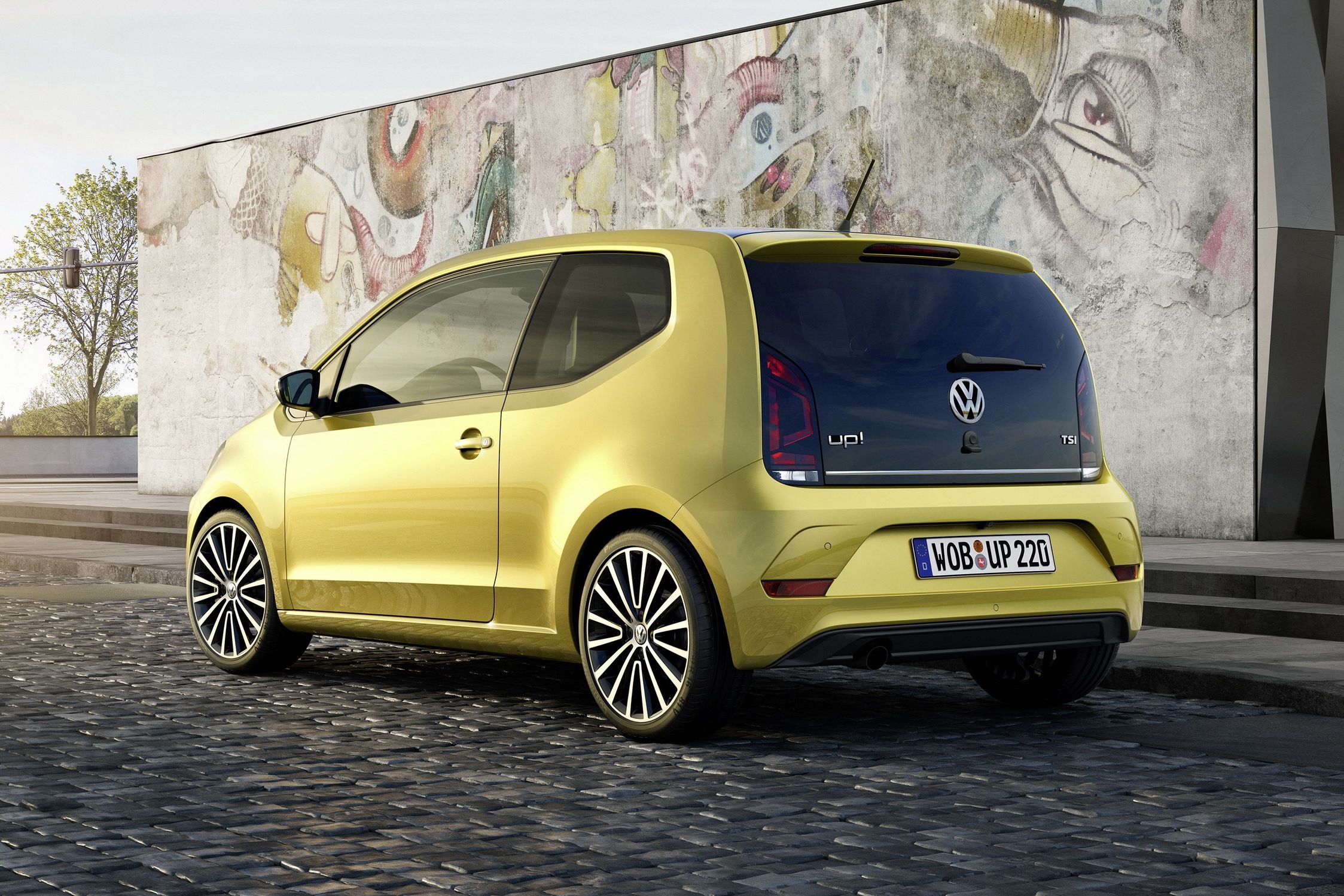Small city cars might not be popular in the U.S., but they’re all the rage in Europe. Blame it both on higher fuel prices and narrow roads, small cars typically sell well in the sprawling urban environments found overseas. Volkswagen->ke94 is no stranger to these small cars, having quite the colorful history with automaking since its creation amidst the Second World War. The 2016 Geneva Motor Show->ke228 hosted VW’s latest small car entry – the refreshed Up!.->ke3151
The Up! sports restyled body panels with new available color choices, new wheels, a redesigned interior, a new slew of customization options, and a new powertrain. Basically, VW replaced everything but the chassis. The new engine produces more horsepower and torque than ever offered in the Up! – more so in fact that VW claims the new Up! matches the performance of the original Golf GTI.->ke223
Volkswagen proudly boasts the Up! is the number one selling vehicle in its segment inside Germany and the Netherlands. Outside Europe, the Up! still has major sales success in Brazil, Japan, and South Africa. These updates should help boost sales even more, helping VW on its goal of becoming the world’s largest automaker.
Continue reading to learn more about the Volkswagen up!.
2017 Volkswagen Up!
- Make: Array
- Model: 2017 Volkswagen Up!
- Engine/Motor: inline-3
- Horsepower: 89
- Torque: 118
- [do not use] Vehicle Model: Array
<
Exterior
The Up! looks extremely futuristic with its new design, especially out back. The rear window glass flows seamlessly down onto the hatch, making the blacked out panel something of an eye-catcher. Even the emblems are attached to the glass.
Up front, the new bumper design boasts more black trim pieces, with a sort of Cheshire cat look. The large VW emblem separates the two LED-encrusted headlights, tying the entire look together. Like before, the wheels are placed near each corner, giving the Up! a rather sporty look. The tall greenhouse holds a huge windshield and large side glass, making outward visibility impressive. Sharp lines accentuate every body panel, with creases on the fender wells, around the beltline, along the hood, on the lower portion of the doors, and along the rear bumper.
Overall, the Up! looks far more up-scale (pardon the pun). Its new appearance makes the car feel more valuable than most offerings in this sub-compact class.
Interior
The interior changes are drastic, but the outgoing design is still present underneath the differences. Most noticeable is the new dash panel. As seen here, the yellow accents help liven the otherwise dark cabin. The yellow continues onto the seats and upper door panels. Though VW’s press release doesn’t mention it, this color splash is likely optional, with other colors offered as well.
A new steering wheel and gauge cluster greet the driver, with a revised center stack holding HVAC and radio controls. A new lower console features a single cup holder a small shelf, and the gear shifter. Two more cup holders reside in the door panels. An old-school parking brake resides between the seats, sadly eliminating any hope for a center storage compartment. Then again, the Up! is a small car with little extra interior volume. The space between the seats is very, very limited.
VW is taking smart phone integration to the next level with the Up!. Rather than having an expensive infotainment screen, an optional phone mount hold the driver’s (or passenger’s) smart phone. With a special VW app downloaded and running, the phone becomes the infotainment system with navigation, on-board computer functions, and Bluetooth connectivity.
For audiophiles, an available sound system from BeatsAudio makes the Up! a mobile sound chamber, pumping 300 watts of power into the tiny cabin. Also available is VW’s Pure Air Climatronic system. The HVAC system uses a biogenic filter to keep the cabin free of outside air contaminants like pollen and allergens.
Drivetrain
The Up! is now powered by an all-new, 1.0-liter TSI inline three-cylinder. The turbocharged engine features direct fuel injection, helping it make 89 horsepower and 118 pound-feet of torque. More impressively, peak torque comes on at only 1,500 rpm. Thanks to the car’s light curb weight, the Up! can reach 62 mph in 10 seconds while its top speed is listed at 115 mph. Power is routed to the front wheels via a six-speed manual transmission.
The new engine isn’t just more powerful, it’s more efficient and green. The car averages 4.4 l/100 km, which translates to 53.4 mpg. Even with a small fuel tank, the Up! can travel 800 km, or nearly 500 miles on a single fill-up. (Again, the pun was intended.)
Prices
Volkswagen has not announced pricing for the 2017 Up!, but we suspect pricing will stay close to current levels. The current base trim, the Take Up!, starts at £8,945, or $12,710 at current exchange rates. Selecting the range-topping Rocket Up!, the price escalates to £13,695, or nearly $20,000.
Competition
Fiat 500
While U.S. buyers aren’t too familiar with the Up!, we are gaining an appreciation for the Fiat 500. This tiny city car offers a fun ride in an equally fun package. Four seats means with wife and kids can ride along, though the kiddos had better be pre-teen size to fit comfortably. There’s even a truck that expands with the rear seatbacks folded. The Fiat 500 is offered with several different engine options, depending on the market. However, the most fun option is the 1.4-liter turbo engine found in the 500 Abarth.
Prices for the 500 start at $16,995 and expand to $22,500 for the sporty Abarth.
Read our full review on the Fiat 500 here.
Smart ForTwo
The Smart ForTwo is perhaps the quintessential city car – at least in the eyes of Americans. It was the first true super sub-compact vehicle offered in the States and gave U.S. buyers a taste of European driving tastes. The ForTwo got its most recent update for the 2015 model year and offers sharper exterior looks, a much more inviting cabin, and three new engine options. Opting for the most powerful, you’ll get a 0.898-liter (that’s 898 CCs) three-cylinder making 90 horsepower and 99 pound-feet of torque. That’s certainly nothing to brag about, but when the car’s curb weight barley scratches 1,900 pounds, not much is needed for propulsion.
Prices for the 2016 Smart ForTwo start at $14,650 here in the U.S.
Read our full review on the Smart ForTwo here.
Conclusion
Volkswagen must have done its homework when preparing for this mid-cycle refresh. The 2017 Up! is more fun looking, more efficient and environmentally friendly, and filled with more up-to-date technology. These are all things modern urban buyers are looking for. Best of all, the pricing is right. Folks in the U.S. have an extremely limited selection of sub-$13,000 vehicles, much less one with such personality. Then again, the Up! probably isn’t the smartest choice for hour-long commutes on interstate freeways where speeds are often exceeding 75 mph.
Nevertheless, the Up! isn’t sold Stateside and our European friends seem smitten with the little car. It’s just nice to see VW invest in the smallest end of its growing lineup.

